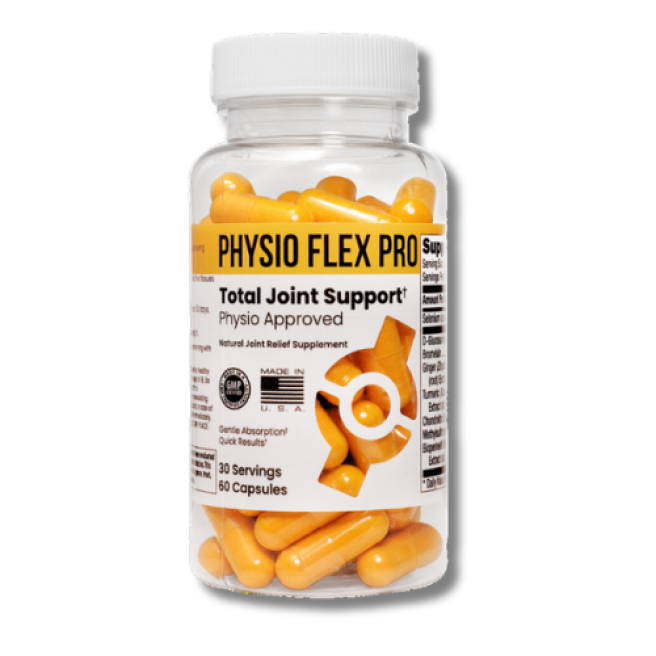Daily mobility exercises enhance movement, reduce pain, and provide a better slate of health for older adults who suffer from age-related mobility issues as the years go by. Seniors who do this experience have a reduced rate of common age-related health issues and have a better quality of life.
These senior mobility exercises can be done right in the comfort of your home. Give them a try!
The Science Behind Mobility Exercises For Seniors
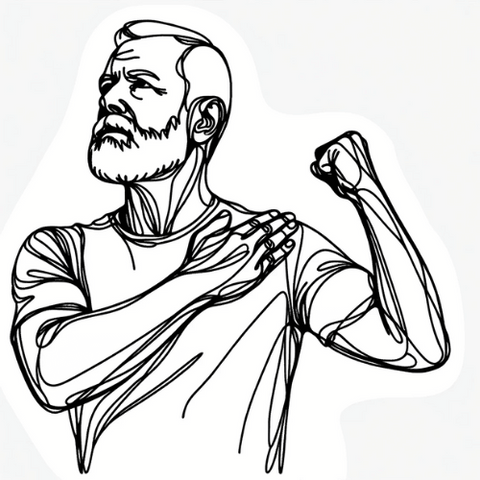
Mobility is a person’s ability to change and control their body positions and overall movement. Factors like sufficient muscle strength and energy, musculoskeletal stability, optimal joint function, and a synchronized neuromuscular system contribute to healthy physical mobility. Otherwise, a disruption of any of the factors may lead to impaired mobility or immobility.
Benefits of Mobility Exercises For Seniors
Regular physical activity and exercise for seniors help improve mental and physical health, which will help you maintain your independence as you age.
As a person ages, muscles, bones, and joints undergo physiological changes that affect mobility. The aging process causes a decrease in muscle mass (sarcopenia), strength, and bone density, resulting in the joints becoming stiffer and less flexible due to cartilage reduction. The ligaments also shorten and contribute to further flexibility loss. In some cases, brain function also suffers as a result.
With that considered, older adults are especially at risk for accidents involving slips and falls, so it's necessary to keep your balance well-trained as you get older to prevent the risk of injuries. Various studies have linked regular physical exercise to increased muscle strength and improved balance and coordination in older adults.
Various studies show that exercise training in older people can yield health benefits such as high cardiorespiratory fitness, lowered blood pressure, and decreased sarcopenia. However, the benefits of physical exercise for seniors also benefit the cognitive process – one study showed that aerobic exercises or resistance training helped improve cognitive ability in older adults.
Mobility exercises also help boost confidence and independence among seniors. Healthy self-esteem can drop after age 65 or 70 due to factors like body changes and life-altering events, which can make older adults more withdrawn, less active, and more fearful about the future. Studies show that performing balance exercises can help boost confidence and ease mood.
Mobility Exercises for Seniors
Older adults should be as physically active as their abilities and health conditions allow. A combination of moderate-intensity aerobic, muscle-strengthening, and stretching exercises can keep their mobility at bay and yield other physical and cognitive health benefits.
The CDC recommends that older adults, specifically those aged 65 and above, do at least 150 minutes of physical exercise weekly, divided and spread throughout the days of the week (i.e., 30 minutes daily, for 5 days).
1. Bird Dog Exercise
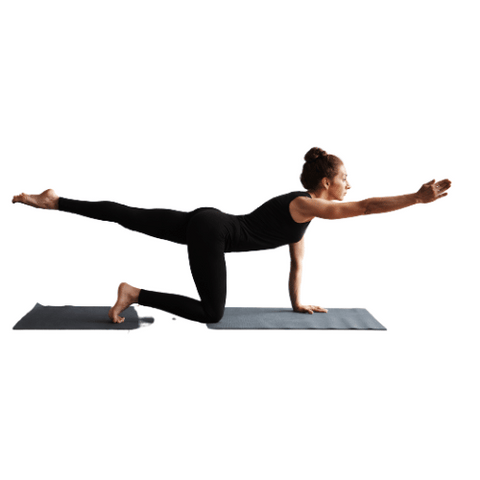
Benefits:
The bird dog is a simple exercise that improves overall balance by promoting a neutral spine and relieving low back pain. As a result, you get proper posture and an increased range of motion.
This exercise pose uses the whole body to target and strengthen the muscles in the core, hips, and back.
How to perform:
- Get on your hands and knees on an exercise mat or soft surface.
-
Extend one leg backward, lifting it parallel to the floor.
-
Extend the opposite arm up, lifting it parallel to the floor.
-
Maintain a straight line from your foot to your hand, and hold for 5 seconds before returning to the first position.
-
Switch sides and repeat the exercise.
2. Cactus Arms

Benefits:
The cactus arms exercise helps stretch and strengthen your arms, shoulders, back, and spine, ultimately reducing the risk of backaches. The exercise also helps to open the chest, rib cage, and upper back and allows the chest and rib cage to expand.
The exercise mainly strengthens the shoulders and base of the arms.
How to perform:
- Stand straight with arms at the sides and feet shoulder-width apart.
- Raise arms and bend elbows at a 90-degree angle.
- Extend arms outwards with biceps on either side of your head, hands facing forward.
- Hold the pose, raise hands higher until arms are fully extended upward
- Repeat the first position.
3. Clam Pose
Benefits:
The clamshell is an exercise for the gluteal muscles, which tend to be neglected. It strengthens the outside of the glutes, builds up the hips, and restores balance and mobility to prevent injury and pain.
The exercise mainly strengthens the hips and glutes, benefitting the inner and outer thighs as a secondary effect.
How to perform:
- Lie on one side with the knees slightly bent and one leg on the other.
- Keep the feet together and lift the top knee until it parallels the hip.
- Lower your knee back to the initial position.
- Repeat and then switch sides. Do as many repetitions as you feel comfortable with.
4. Lower Back Rotation

Benefits:
This exercise primarily provides relief from chronic low back pain by stretching the muscles around the spine that help improve motion and reduce the risks of strain or injury in the hips and spine. It also promotes fewer injuries, increased flexibility, and healthier blood circulation.
How to perform:
- Sit on a chair, bench, or stool with feet flat on the floor.
- Twist the upper body to the left until resistance is felt in the shoulder and back, and hold for a few seconds.
- Return to the first position.
- Repeat the exercise in the opposite direction.
5. Neck Rotation
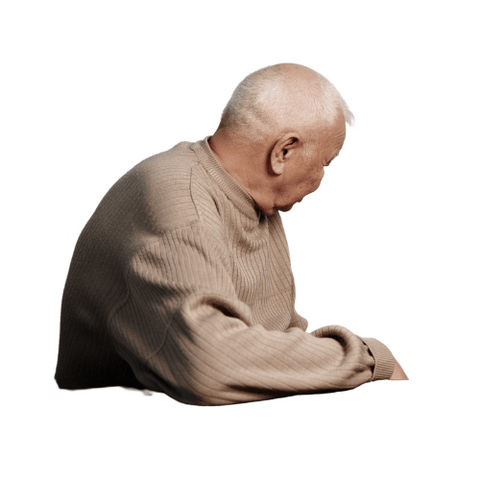
Benefits:
Otherwise known as neck rolls, the neck rotation exercise helps relax and stretch the neck muscles and the cervical spine.
This exercise can help alleviate any discomfort or stiffness associated with neck strain and can help prevent neck injuries and pain. It also helps maintain the range of motion through the upper back and neck.
How to perform:
- Sit on a chair, bench, or stool, and face forward.
- Slowly rotate the head to the left until just past the shoulder, hold, and return to the original position.
- Repeat the exercise and switch to the opposite side.
6. Quad Stretch
Benefits:
Quad stretches help improve overall leg mobility. Tight quadriceps contribute to knee, hip, and lower back pain, so stretching the quadriceps muscles helps increase mobility, flexibility, and range of motion in the knee and hip joints and reduce overall musculoskeletal pain:
How to perform:
- Sit on a chair or bench with no arms.
- Scoot across until only one leg remains over the seat, and lower the free leg until the knee meets the floor.
- Lean back slightly until a stretch is felt in the front thigh muscles, hold, and return to the original position.
- Repeat the exercise by switching sides.
7. Seated Ab Press
Benefits:
Seated abdominal exercises can strengthen your core muscles, offer better support to the spine, and maintain proper alignment, which can help reduce the risk of back pain and other posture-related issues.
Working and stretching the abs can also increase flexibility, decrease injury, and help you move and work out easily.
How to perform:
- Sit on a chair, bench, or stool with feet flat on the floor.
- Put hands on knees and lock elbows in place.
- Press hands into knees until abdominal muscles are engaged, hold, and relax.
8. Side Bend
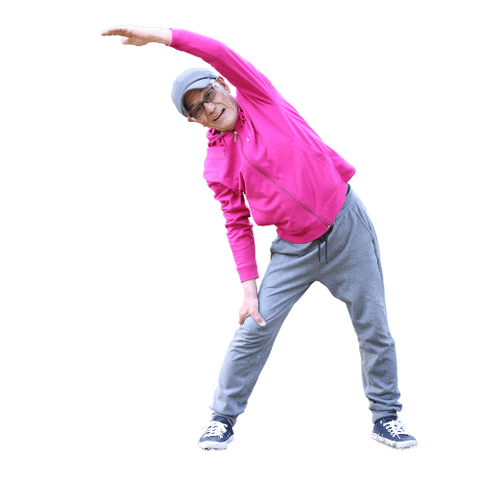
Benefits:
The side bending exercise strengthens the core muscles, helps improve posture, increases lung capacity, improves circulation, promotes spinal mobility, helps alleviate pain between the shoulder blades, improves breathing efficiency, and even reduces stress and anxiety.
The exercise strengthens the obliques, lats, intercostals (muscles that run between the ribs), shoulders, and arms.
How to perform:
- Stand straight with arms at the sides and feet shoulder-width apart.
- Bend the waist towards the left, allowing the left hand to travel down the thigh to the knee, hold, and return to the starting position.
- Repeat the workout, switching to the opposite direction.
9. Side Bend with Overhead Reach

Benefits:
A slight variation of the side bend, the side bend with overhead reach, is particularly beneficial to seniors; it stretches your back and core, opens up your chest and shoulders, and treats your neck to gentle pressure that eases soreness in mobility.
How to perform:
- Stand straight with arms at the sides and feet shoulder-width apart.
- Raise both arms directly overhead with fingers pointed upward.
- Lean over to your left, return to center and lean over to your right.
10. Air Squat
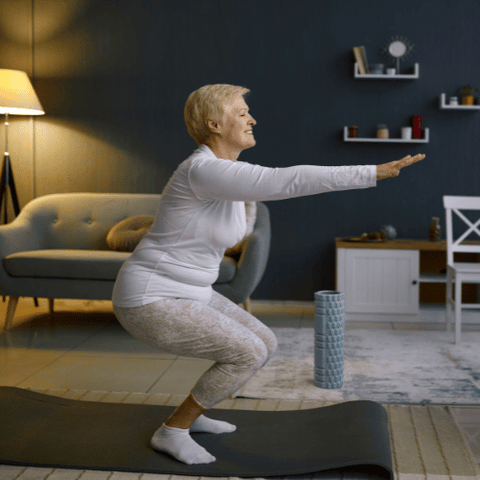
Benefits:
Air squats build both a solid foundation and balance in the lower body and engage the core muscles to enhance one’s leg strength and improve balance. Since this exercise targets the thighs, hamstrings, quadriceps, and glutes, it helps add muscle mass.
How to perform:
- Start in a standing position with feet shoulder-width apart.
- Stretch arms out in front of you until they are parallel to the floor.
- Lower body down as if sitting back into a chair, keeping chest upright.
- Return to the first position and repeat.
Safety Precautions
Older adults are more prone to more general exercise-related injuries than younger adults. The following injuries are frequently reported:
- Lower back injuries - A common problem among older adults, pain in the lower back results from natural wear and tear, excessive sitting, or carrying excess weight.
- Overuse injuries - Overuse injuries of the knee occur after performing activities that require repetitive motion. Given the repetitive minutia of activity, people working in professions like mining, construction work, and carpentry often suffer overuse injuries in the knee.
- Rotator cuff tears - Another common age-related injury, the wear and tear on the shoulder joints, which are responsible for lifting and rotating the arm, can cause them to become weaker, making them more prone to injury.
- Knee-related injuries - Knee injuries like ACL tear, meniscus tear, and patellar tendonitis often cause pain and discomfort. Bone fractures, sprains, and dislocations also cause occasional knee pain.
Before trying out any exercise regimen, try and consult with a trusted healthcare provider or physical therapist to help walk you through exercise routines, help tailor fit a set of exercises that suit your health condition, and how to start with them gradually.
FAQs
1. What are the best mobility exercises for seniors?
Side bends, seated ab presses, neck rotations, and quad stretches are just some of the recommended exercises for older adults to help maintain and promote mobility, improve posture, and maintain muscle integrity and mass.
2. How often should seniors perform mobility exercises?
The CDC recommends that older adults, specifically those aged 65 and above, do at least 150 minutes of physical exercise weekly, divided and spread throughout the days of the week (i.e., 30 minutes daily, for 5 days)
3. What are the risks associated with mobility exercises for seniors?
Things like lower back pain, meniscus tears, rotator cuff tears, and knee injuries occur more frequently among older adults, given their age and health conditions.
4. How can seniors track their progress with mobility exercises?
Seniors can keep a fitness journal to track down progress and note any changes. Using fitness trackers or apps is also helpful to keep you active and motivated.
5. Are there any resources or programs available for seniors interested in mobility exercises?
There are many resources or exercise programs available for seniors seeking to maintain maximum mobility. Healthcare providers and physical therapists can recommend an ideal exercise and diet plan suited to the patient's needs and health conditions.
Conclusion
Incorporating routine mobility exercises helps older adults maintain easier, more comfortable movement and prevent bone density problems, muscle stiffness, and muscle/joint pain.
Consult your trusted healthcare provider regularly to help you make the most out of your mobility exercises and include possible health habits to further ease movement and enjoy optimal overall health in the process.
Community leaders should also take note of the increasing problem of age-related immobility problems and team up with healthcare professionals, particularly geriatricians and physical therapists, to encourage safe and efficient exercising among seniors.


